Glucose Transport Inhibitors And Methods Of Using Same
BERGMEIER; STEPHEN ; et al.
U.S. patent application number 16/311417 was filed with the patent office on 2019-10-24 for glucose transport inhibitors and methods of using same. The applicant listed for this patent is OHIO UNIVERSITY. Invention is credited to STEPHEN BERGMEIER, XIAOZHUO CHEN.
| Application Number | 20190322613 16/311417 |
| Document ID | / |
| Family ID | 60784520 |
| Filed Date | 2019-10-24 |








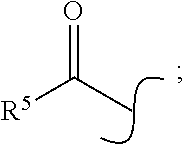



View All Diagrams
| United States Patent Application | 20190322613 |
| Kind Code | A1 |
| BERGMEIER; STEPHEN ; et al. | October 24, 2019 |
GLUCOSE TRANSPORT INHIBITORS AND METHODS OF USING SAME
Abstract
Compounds that inhibit or reduce glucose transport and methods of using the compounds to treat cancer are provided herein.
| Inventors: | BERGMEIER; STEPHEN; (ATHENS, OH) ; CHEN; XIAOZHUO; (ATHENS, OH) | ||||||||||
| Applicant: |
|
||||||||||
|---|---|---|---|---|---|---|---|---|---|---|---|
| Family ID: | 60784520 | ||||||||||
| Appl. No.: | 16/311417 | ||||||||||
| Filed: | June 23, 2017 | ||||||||||
| PCT Filed: | June 23, 2017 | ||||||||||
| PCT NO: | PCT/US17/39036 | ||||||||||
| 371 Date: | December 19, 2018 |
Related U.S. Patent Documents
| Application Number | Filing Date | Patent Number | ||
|---|---|---|---|---|
| 62354479 | Jun 24, 2016 | |||
| Current U.S. Class: | 1/1 |
| Current CPC Class: | C07C 39/367 20130101; C07C 39/15 20130101; C07C 63/331 20130101; A61P 35/00 20180101 |
| International Class: | C07C 63/331 20060101 C07C063/331; C07C 39/15 20060101 C07C039/15; A61P 35/00 20060101 A61P035/00 |
Claims
1. A compound according to formula (I), an enantiomer thereof, or a salt thereof: ##STR00030## wherein X is selected from the group consisting of: halogen; hydrogen; --O-alkyl; hydroxyl (--OH); azido (--N.sub.3); cyano (--CN); nitro (--NO.sub.2); and methoxycarbonyl (--CO.sub.2Me); wherein R.sup.1 and R.sup.2 are independently selected from the group consisting of: ##STR00031## and hydrogen; wherein R.sup.3 and R.sup.4 are independently selected from the group consisting of: hydrogen; halogen; alkyl; --O-alkyl; hydroxyl (--OH); cyano (--CN); and methoxycarbonyl (--CO.sub.2Me); wherein one of R.sup.1 and R.sup.2 is hydrogen; wherein R.sup.6 is selected from the group consisting of: hydrogen; alkyl; and aryl; wherein R.sup.5 is selected from the group consisting of: hydroxyl (--OH); --O-alkyl; --NH-- alkyl; and --N-(alkyl).sub.2; wherein R.sup.7 is selected from the group consisting of: alkyl; aryl; and heteroaryl and wherein R.sup.8 is selected from the group consisting of: alkyl; aryl; and heteroaryl.
2. The compound according to claim 1, wherein: X is halo; R.sup.1 is hydrogen; R.sup.2 is ##STR00032## R.sup.3 is hydrogen; R.sup.4 is hydrogen; and R.sup.6 is hydrogen.
3. The compound according to claim 2, wherein X is --Cl.
4. The compound according to claim 1, wherein: X is halo; R.sup.1 is ##STR00033## R.sup.2 is hydrogen; R.sup.3 is hydrogen; R.sup.4 is hydrogen; and R.sup.6 is hydrogen.
5. The compound according to claim 4, wherein X is --Cl.
6. The compound according to claim 1, wherein: X is halo; R.sup.1 is hydrogen; R.sup.2 is ##STR00034## R.sup.3 is hydrogen; R.sup.4 is hydrogen; and R.sup.5 is --O-alkyl.
7. The compound according to claim 6, wherein: X is --Cl; and R.sup.5 is methoxy (--OMe).
8. The compound according to claim 1, wherein: X is halo; R.sup.1 is ##STR00035## R.sup.2 is hydrogen R.sup.3 is hydrogen; R.sup.4 is hydrogen; and R.sup.5 is --O-alkyl.
9. The compound according to claim 8, wherein: X is --Cl; and R.sup.5 is methoxy (--OMe).
10.-13. (canceled)
14. A compound according to formula (II), an enantiomer thereof, or a salt thereof: ##STR00036## wherein X is selected from the group consisting of: hydrogen; halogen; --O-alkyl; hydroxyl (--OH); cyano (--CN); azido (--N.sub.3); nitro (--NO.sub.2); and methoxycarbonyl (--CO.sub.2Me); wherein R.sup.1 and R.sup.2 are independently selected from the group consisting of: hydrogen; hydroxymethyl (--CH.sub.2OH); and methoxycarbonyl (--CO.sub.2Me); wherein one of R.sup.1 and R.sup.2 is hydrogen; wherein when R.sup.1 is hydrogen, R.sup.3 is hydroxyl (--OH) and R.sup.4 is --O-alkyl; and wherein when R.sup.2 is hydrogen, R.sup.3 is --O-alkyl and R.sup.4 is hydroxyl (--OH).
15. The compound according to claim 14, wherein: X is halo; R.sup.1 is hydrogen; R.sup.2 is methoxycarbonyl (--CO.sub.2Me); R.sup.3 is hydroxyl (--OH); and R.sup.4 is --O-alkyl.
16. The compound according to claim 15, wherein: X is --Cl; and R.sup.4 is methoxy (--OMe).
17. The compound according to claim 14, wherein: X is halo; R.sup.1 is hydrogen; R.sup.2 is hydroxymethyl (--CH.sub.2OH); R.sup.3 is hydroxyl (--OH); and R.sup.4 is --O-alkyl.
18. The compound according to claim 17, wherein: X is --Cl; and R.sup.4 is methoxy (--OMe).
19.-20. (canceled)
21. A method of treating cancer in a subject comprising: administering to a subject in need of such treatment a therapeutically effective amount of a compound according to formula (I), an enantiomer thereof, or a salt thereof: ##STR00037## wherein X is selected from the group consisting of: halogen; hydrogen; --O-alkyl; hydroxyl (--OH); azido (--N.sub.3); cyano (--CN); nitro (--NO.sub.2); and methoxycarbonyl (--CO.sub.2Me); wherein R.sup.1 and R.sup.2 are independently selected from the group consisting of: ##STR00038## and hydrogen; wherein R.sup.3 and R.sup.4 are independently selected from the group consisting of: hydrogen; halogen; alkyl; --O-alkyl; hydroxyl (--OH); cyano (--CN); and methoxycarbonyl (--CO.sub.2Me); wherein one of R.sup.1 and R.sup.2 is hydrogen; wherein R.sup.6 is selected from the group consisting of: hydrogen; alkyl; and aryl; wherein R.sup.5 is selected from the group consisting of: hydroxyl (--OH); --O-alkyl; --NH-- alkyl; and --N-(alkyl).sub.2; wherein R.sup.7 is selected from the group consisting of: alkyl; aryl; and heteroaryl and wherein R.sup.8 is selected from the group consisting of: alkyl; aryl; and heteroaryl.
22. (canceled)
23. The method according to claim 21, wherein the cancer is selected from lung cancer, colon cancer, melanoma, leukemia, ovarian cancer, renal cancer, prostate cancer, breast cancer, or a glioma.
24. The method according to claim 23, wherein the compound is ##STR00039##
25. A method of treating cancer in a subject comprising: administering to a subject in need of such treatment a therapeutically effective amount of a compound according to formula (II), an enantiomer thereof, or a salt thereof: ##STR00040## wherein X is selected from the group consisting of: hydrogen; halogen; --O-alkyl; hydroxyl (--OH); cyano (--CN); azido (--N.sub.3); nitro (--NO.sub.2); and methoxycarbonyl (--CO.sub.2Me); wherein R.sup.1 and R.sup.2 are independently selected from the group consisting of: hydrogen; hydroxymethyl (--CH.sub.2OH); and methoxycarbonyl (--CO.sub.2Me); wherein one of R.sup.1 and R.sup.2 is hydrogen; wherein when R.sup.1 is hydrogen, R.sup.3 is hydroxyl (--OH) and R.sup.4 is --O-alkyl; and wherein when R.sup.2 is hydrogen, R.sup.3 is --O-alkyl and R.sup.4 is hydroxyl (--OH).
26. The compound according to claim 25, wherein: X is halo; R.sup.1 is hydrogen; R.sup.2 is methoxycarbonyl (--CO.sub.2Me); R.sup.3 is hydroxyl (--OH); and R.sup.4 is --O-alkyl.
27. The compound according to claim 25, wherein: X is halo; R.sup.1 is hydrogen; R.sup.2 is hydroxymethyl (--CH.sub.2OH); R.sup.3 is hydroxyl (--OH); and R.sup.4 is --O-alkyl.
Description
CROSS-REFERENCE TO RELATED APPLICATIONS
[0001] This application claims priority to and any other benefit of U.S. Provisional Patent Application No. 62/354,479, filed Jun. 24, 2016, the content of which is incorporated by reference herein in its entirety.
FIELD
[0002] The present disclosure relates to chemical compounds that inhibit or reduce glucose transport and methods of using the chemical compounds to treat cancer.
BACKGROUND
[0003] The Warburg effect, or upregulated glycolysis, is a near-universal hallmark of cancer cells. Because of the increasing demands for biomaterials and energy generated during rapid cell proliferation, cancer cells rely on upregulating glycolysis. As a result, cancer cells are much more sensitive to changes in glucose concentration and glucose metabolism than normal cells.
[0004] Basal glucose transporters (GLUTs) function as glucose channels and are required for maintaining the basic glucose needs of cells. These GLUTs are constitutively expressed and functional in cells and are not regulated by (or sensitive to) insulin. All cells use both glycolysis and oxidative phosphorylation in mitochondria but rely overwhelmingly on oxidative phosphorylation when oxygen is abundant, switching to glycolysis at times of oxygen deprivation (hypoxia), as occurs in cancer. In glycolysis, glucose is converted to pyruvate and 2 ATP molecules are generated in the process. Cancer cells, because of their faster proliferation rates, are predominantly in a hypoxic (low oxygen) state. Therefore, cancer cells use glycolysis (lactate formation) as their predominant glucose metabolism pathway. Such a glycolytic switch not only gives cancer higher potentials for metastasis and invasiveness, but also increases cancer's vulnerability to external interference in glycolysis since cancer cells are "addicted" to glucose and glycolysis. The reduction of basal glucose transport is likely to restrict glucose supply to cancer cells, leading to glucose deprivation that forces cancer cells to slow down growth or to starve.
SUMMARY
[0005] Disclosed herein are chemical compounds that inhibit or reduce glucose transport and methods of using the chemical compounds to treat cancer. By way of example to illustrate various aspects of the present disclosure, several exemplary embodiments of chemical compounds and methods of using the chemical compounds to treat cancer are provided herein.
[0006] In one exemplary embodiment, compounds according to formula (I), enantiomers thereof, or salts thereof that inhibit or reduce glucose transport are provided:
##STR00001##
[0007] wherein X is selected from the group consisting of: hydrogen; halogen; --O-alkyl; azido (--N.sub.3); hydroxyl (--OH); cyano (--CN); nitro (--NO.sub.2); and methoxycarbonyl (--CO.sub.2Me);
[0008] wherein R.sup.1 and R.sup.2 are independently selected from the group consisting of: hydrogen;
##STR00002##
[0009] wherein R.sup.3 and R.sup.4 are independently selected from the group consisting of: hydrogen; halogen; alkyl; --O-alkyl; hydroxyl (--OH); cyano (--CN); and methoxycarbonyl (--CO.sub.2Me);
[0010] wherein one of R.sup.1 and R.sup.2 is hydrogen;
[0011] wherein R.sup.5 is selected from the group consisting of: hydroxyl (--OH); --O-alkyl; --NH-- alkyl; and --N-(alkyl).sub.2;
[0012] wherein R.sup.6 is selected from the group consisting of: hydrogen; alkyl; and aryl;
[0013] wherein R.sup.7 is selected from the group consisting of: alkyl; aryl; and heteroaryl; and
[0014] wherein R.sup.8 is selected from the group consisting of: alkyl; aryl; and heteroaryl.
[0015] In one exemplary embodiment, compounds according to formula (II), enantiomers thereof, or salts thereof that inhibit or reduce glucose transport are provided:
##STR00003##
[0016] wherein X is selected from the group consisting of: hydrogen; halogen; --O-alkyl; hydroxyl (--OH); cyano (--CN); azido (--N.sub.3); nitro (--NO.sub.2); and methoxycarbonyl (--CO.sub.2Me);
[0017] wherein R.sup.1 and R.sup.2 are independently selected from the group consisting of: hydrogen; hydroxymethyl (--CH.sub.2OH); and methoxycarbonyl (--CO.sub.2Me);
[0018] wherein one of R.sup.1 and R.sup.2 is hydrogen;
[0019] wherein when R.sup.1 is hydrogen, R.sup.3 is hydroxyl (--OH) and R.sup.4 is --O-alkyl; and
[0020] wherein when R.sup.2 is hydrogen, R.sup.3 is --O-alkyl and R.sup.4 is hydroxyl (--OH).
[0021] In one exemplary embodiment, a method of treating cancer in a subject is provided. The method includes administering to a subject in need of such treatment a therapeutically effective amount of: a compound according to formula (I), or a compound according to formula (II), or a combination of a compound according to formula (I) and a compound according to formula (II).
DETAILED DESCRIPTION
[0022] The present disclosure is directed to chemical compounds that inhibit or reduce glucose transport and methods of using the chemical compounds to treat cancer. While various exemplary embodiments of compounds and methods are described herein in detail, these embodiments are provided so that the present disclosure will be thorough and complete and will fully convey the scope of the invention to those skilled in the art. It will be understood that the exemplary embodiments described herein are not intended to limit the claims.
[0023] The terminology as set forth herein is for description of the embodiments only and should not be construed as limiting the disclosure as a whole. As used in the description and the appended claims, the singular forms "a," "an," and "the" are intended to include the plural forms as well, unless the context clearly indicates otherwise. All references to singular characteristics or limitations of the present disclosure shall include the corresponding plural characteristic or limitation, and vice versa, unless otherwise specified or clearly implied to the contrary by the context in which the reference is made. All materials incorporated by reference are incorporated in their entirety unless otherwise stated. Unless otherwise indicated (e.g., by use of the term "precisely"), all numbers expressing quantities, properties such as molecular weight, reaction conditions, and so forth as used in this disclosure are to be understood as being modified in all instances by the term "about." Accordingly, unless otherwise indicated, the numerical properties set forth in this disclosure are approximations that may vary depending on the desired properties sought to be obtained in the embodiments described herein.
[0024] The term "alkyl" refers to a straight- or branched-chain alkyl group having from 1 to 20 carbon atoms in the chain. For example, the alkyl group can be a (C.sub.1-20)alkyl, a (C.sub.1-12)alkyl, a (C.sub.1-8)alkyl, a (C.sub.1-6)alkyl, or a (C.sub.1-4)alkyl. Exemplary alkyl groups include, but are not limited to, methyl (Me), ethyl (Et), n-propyl, isopropyl, butyl, isobutyl, sec-butyl, tert-butyl (tBu), pentyl, isopentyl, tert-pentyl, hexyl, and isohexyl.
[0025] The term "aryl" refers to a functional group derived from a simple aromatic ring compound where one hydrogen atom is removed from the ring. Exemplary aryl groups include, but are not limited to, phenyl; naphthyl; indanyl; indenyl; 2-, 3-, and 4-hydroxyphenyl; 2,3-, 2,4-, 2,5-, 2,6-, 3,4-, and 3,5-dihydroxyphenyl; 2,3,4-, 2,3,5-, 2,3,6-, and 3,4,5-trihydroxyphenyl; 2,3,4,5- and 2,3,4,6-tetrahydroxyphenyl; perhydroxyphenyl; 2, 3, and 4-halophenyl; 2, 3, and 4-alkylphenyl; 2, 3, and 4-cyanophenyl; 2, 3, and 4-ketophenyl; 2, 3, and 4-carboxyphenyl; 2, 3, and 4-aminophenyl; 2, 3, and 4-nitrophenyl; 2, 3, and 4-hydroxyphenyl; 2, 3, and 4-alkoxyphenyl; disubstituted phenyl, and trisubstituted phenyl derivatives.
[0026] The term "heteroaryl" refers to a functional group derived from a heteroaromatic ring. Heteroaromatic species contain a heteroatom, or an atom other than hydrogen or carbon, including, oxygen, nitrogen, sulfur, phosphorous, silicon, and boron. Exemplary heteroaryl groups include, but are not limited to, furans, benzofurans, thiophenes, benzothiophenes, pyrroles, indoles, and borabenzenes.
[0027] The term "O-alkyl" refers to an alkyl group singly bonded to an oxygen, or an aryl group singly bonded to an oxygen. Exemplary O-alkyl groups include, but are not limited to, methoxy (OMe), ethoxy, n-propoxy, i-propoxy, n-butoxy, t-butoxy, and phenoxy.
[0028] The term "salt" refers to an ionic species resulting from the pairing of an anionic derivative of one of the compounds of formula (I) and formula (II) with a cationic species. The cationic species may include, but is not limited to, lithium, sodium, potassium, magnesium, calcium, and manganese.
[0029] The term "therapeutically effective" when used to describe an amount of a compound administered in a method, refers to the amount of a compound that achieves the desired biological effect, for example, an amount that leads to the inhibition or reduction of basal glucose transport.
[0030] In one exemplary embodiment, compounds according to formula (I), enantiomers thereof, or salts thereof that inhibit or reduce glucose transport are provided:
##STR00004##
[0031] wherein X is selected from the group consisting of: hydrogen; halogen; --O-alkyl; azido (--N.sub.3); hydroxyl (--OH); cyano (--CN); nitro (--NO.sub.2); and methoxycarbonyl (--CO.sub.2Me);
[0032] wherein R.sup.1 and R.sup.2 are independently selected from the group consisting of: hydrogen;
##STR00005##
[0033] wherein R.sup.3 and R.sup.4 are independently selected from the group consisting of: hydrogen; halogen; alkyl; --O-alkyl; hydroxyl (--OH); cyano (--CN); and methoxycarbonyl (--CO.sub.2Me);
[0034] wherein one of R.sup.1 and R.sup.2 is hydrogen;
[0035] wherein R.sup.5 is selected from the group consisting of: hydroxyl (--OH); --O-alkyl; --NH-- alkyl; and --N-(alkyl).sub.2;
[0036] wherein R.sup.6 is selected from the group consisting of: hydrogen; alkyl; and aryl;
[0037] wherein R.sup.1 is selected from the group consisting of: alkyl; aryl; and heteroaryl and
[0038] wherein R.sup.8 is selected from the group consisting of: alkyl; aryl; and heteroaryl.
[0039] In certain embodiments, compounds according to formula (I), enantiomers thereof, or salts thereof are provided, wherein:
[0040] X is halo;
[0041] R.sup.1 is hydrogen;
[0042] R.sup.2 is
##STR00006##
[0043] R.sup.3 is hydrogen;
[0044] R.sup.4 is hydrogen; and
[0045] R.sup.5 is --O-alkyl.
[0046] In certain embodiments, a compound according to formula (I), referred to herein as EKB-1, is provided, wherein:
[0047] X is --Cl; [0048] R.sup.1 is hydrogen;
[0049] R2 is
##STR00007##
[0050] R3 is hydrogen;
[0051] R4 is hydrogen; and
[0052] R5 is methoxy (--OMe).
[0053] The structure of EKB-1 is shown below.
##STR00008##
[0054] In certain embodiments, compounds according to formula (I), enantiomers thereof, or salts thereof are provided, wherein:
[0055] X is halo;
[0056] R.sup.1 is
##STR00009##
[0057] R.sup.2 is hydrogen;
[0058] R.sup.3 is hydrogen;
[0059] R.sup.4 is hydrogen; and
[0060] R.sup.5 is --O-alkyl.
[0061] In certain embodiments, a compound according to formula (I), referred to herein as EKB-2, is provided, wherein:
[0062] X is --Cl;
[0063] R.sup.1 is
##STR00010##
[0064] R.sup.2 is hydrogen;
[0065] R.sup.3 is hydrogen;
[0066] R.sup.4 is hydrogen; and
[0067] R.sup.5 is methoxy (--OMe).
[0068] The structure of EKB-2 is shown below.
##STR00011##
[0069] In certain embodiments, compounds according to formula (I), enantiomers thereof, or salts thereof are provided, wherein:
[0070] X is halo;
[0071] R.sup.1 is
##STR00012##
[0072] R.sup.2 is hydrogen;
[0073] R.sup.3 is hydrogen;
[0074] R.sup.4 is hydrogen; and
[0075] R.sup.6 is hydrogen.
[0076] In certain embodiments, a compound according to formula (I), referred to herein as EKB-3, is provided, wherein:
[0077] X is --Cl;
[0078] R.sup.1 is
##STR00013##
[0079] R.sup.2 is hydrogen;
[0080] R.sup.3 is hydrogen;
[0081] R.sup.4 is hydrogen; and
[0082] R.sup.6 is hydrogen.
[0083] The structure of EKB-3 is shown below.
##STR00014##
[0084] In certain embodiments, compounds according to formula (I), enantiomers thereof, or salts thereof are provided, wherein:
[0085] X is halo;
[0086] R.sup.1 is hydrogen;
[0087] R.sup.2 is
##STR00015##
[0088] R.sup.3 is hydrogen;
[0089] R.sup.4 is hydrogen; and
[0090] R.sup.6 is hydrogen.
[0091] In certain embodiments, a compound according to formula (I), referred to herein as EKB-4, is provided, wherein:
[0092] X is --Cl;
[0093] R.sup.1 is hydrogen;
[0094] R.sup.2 is
##STR00016##
[0095] R.sup.3 is hydrogen;
[0096] R.sup.4 is hydrogen; and
[0097] R.sup.6 is hydrogen.
[0098] The structure of EKB-4 is shown below.
##STR00017##
[0099] In one exemplary embodiment, compounds according to formula (II), enantiomers thereof, or salts thereof that inhibit or reduce glucose transport are provided:
##STR00018##
[0100] wherein X is selected from the group consisting of: hydrogen; halogen; --O-alkyl; hydroxyl (--OH); cyano (--CN); azido (--N.sub.3); nitro (--NO.sub.2); and methoxycarbonyl (--CO.sub.2Me);
[0101] wherein R.sup.1 and R.sup.2 are independently selected from the group consisting of: hydrogen; hydroxymethyl (--CH.sub.2OH); and methoxycarbonyl (--CO.sub.2Me);
[0102] wherein one of R.sup.1 and R.sup.2 is hydrogen;
[0103] wherein when R.sup.1 is hydrogen, R.sup.3 is hydroxyl (--OH) and R.sup.4 is --O-alkyl; and
[0104] wherein when R.sup.2 is hydrogen, R.sup.3 is --O-alkyl and R.sup.4 is hydroxyl (--OH).
[0105] In certain embodiments, compounds according to formula (II), enantiomers thereof, or salts thereof are provided, wherein:
[0106] X is halo;
[0107] R.sup.1 is hydrogen;
[0108] R.sup.2 is methoxycarbonyl (--CO.sub.2Me);
[0109] R.sup.3 is hydroxyl (--OH); and
[0110] R.sup.4 is --O-alkyl.
[0111] In certain embodiments, a compound according to formula (II), referred to herein as JDB-1, is provided, wherein:
[0112] X is --Cl;
[0113] R.sup.1 is hydrogen;
[0114] R.sup.2 is methoxycarbonyl (--CO.sub.2Me);
[0115] R.sup.3 is hydroxyl (--OH); and
[0116] R.sup.4 is methoxy (--OMe).
[0117] The structure of JDB-1 is shown below.
##STR00019##
[0118] In certain embodiments, compounds according to formula (II), enantiomers thereof, or salts thereof are provided, wherein:
[0119] X is halo;
[0120] R.sup.1 is hydrogen;
[0121] R.sup.2 is hydroxymethyl (--CH.sub.2OH);
[0122] R.sup.3 is hydroxyl (--OH); and
[0123] R.sup.4 is --O-alkyl.
[0124] In certain embodiments, a compound according to formula (II), referred to herein as JDB-2, is provided, wherein:
[0125] X is --Cl;
[0126] R.sup.1 is hydrogen;
[0127] R.sup.2 is hydroxymethyl (--CH.sub.2OH);
[0128] R.sup.3 is hydroxyl (--OH); and
[0129] R.sup.4 is methoxy (--OMe).
[0130] The structure of JDB-2 is shown below.
##STR00020##
[0131] In one exemplary embodiment, compounds according to formula (I) and formula (II), and in particular, compounds EKB-1, EKB-2, EKB-3, EKB-4, JDB-1, and JDB-2, are prepared according to the following reaction schemes.
##STR00021## ##STR00022##
[0132] As seen in Scheme 1, two different monoalkylated phenols (10) and (13) were prepared. Commercially available 5-chlorosalicylaldehyde (7) and 4-chlorosalicylaldehyde (11) were alkylated with benzyl bromide (8) to provide compounds (9) and (12), respectively. A Baeyer-Villiger reaction followed by hydrolysis of the resulting formate ester provided the monoalkylated phenol compounds (10) and (13).
[0133] After preparing monoalkylated phenol compounds (10) and (13), the synthesis of a substituted derivative was carried out. As seen in Scheme 2, ester (14) was protected as a MOM-ether and the benzylic position was brominated using NBS to provide compound (16) in excellent yield.
##STR00023##
[0134] As seen in Scheme 3, alkylation of compound (10) with compound (16) provided compound (17) in moderate yield. Removal of the MOM-protecting groups provided compound EKB-1. Reduction of the ester followed by removal of the MOM-protecting groups provided compound EKB-4.
##STR00024##
[0135] Compounds EKB-2 and EKB-3 were prepared in the same way starting with phenol (13), as shown in Scheme 4.
##STR00025##
[0136] Compounds JDB-1 and JDB-2 were prepared by the same methods used to prepare the EKB compounds.
[0137] In certain exemplary embodiments, analogs of EKB-compounds, enantiomers thereof, or salts thereof are provided. In certain exemplary embodiments, analogs of EKB-compounds, enantiomers thereof, or salts thereof according to formula (A) are provided:
##STR00026##
[0138] wherein X is selected from the group consisting of: halogen; cyano (--CN); azido (--N.sub.3); nitro (--NO.sub.2); --O-alkyl; hydroxyl (--OH); and methoxycarbonyl (--CO.sub.2Me);
[0139] wherein R.sup.1 is selected from the group consisting of: hydroxyl (--OH); --O-alkyl; --NH-alkyl; --N(alkyl).sub.2; and
[0140] wherein R.sup.2 and R.sup.3 are independently selected from the group consisting of: alkyl; --O-alkyl; hydroxyl (--OH); halogen; cyano (--CN); and methoxycarbonyl (--CO.sub.2Me).
[0141] In certain exemplary embodiments, analogs of EKB-compounds, enantiomers thereof, or salts thereof according to formula (B) are provided:
##STR00027##
[0142] wherein X is selected from the group consisting of: halogen; cyano (--CN); azido (--N.sub.3); nitro (--NO.sub.2); --O-alkyl; hydroxyl (--OH); and methoxycarbonyl (--CO.sub.2Me);
[0143] wherein R.sup.1 is selected from the group consisting of: alkyl and aryl; and
[0144] wherein R.sup.2 and R.sup.3 are independently selected from the group consisting of: alkyl; --O-alkyl; hydroxyl (--OH); halogen; cyano (--CN); and methoxycarbonyl (--CO.sub.2Me).
[0145] In certain exemplary embodiments, analogs of EKB-compounds, enantiomers thereof, or salts thereof according to formula (C) are provided:
##STR00028##
[0146] wherein X is selected from the group consisting of: halogen; cyano (--CN); azido (--N.sub.3); nitro (--NO.sub.2); --O-alkyl; hydroxyl (--OH); and methoxycarbonyl (--CO.sub.2Me);
[0147] wherein R' is selected from the group consisting of: alkyl and aryl; and
[0148] wherein R.sup.2 and R.sup.3 are independently selected from the group consisting of: alkyl; --O-alkyl; hydroxyl (--OH); halogen; cyano (--CN); and methoxycarbonyl (--CO.sub.2Me).
[0149] Compounds EKB-1, EKB-2, EKB-3, EKB-4, JDB-1, and JDB-2 were assayed for their ability to inhibit glucose uptake and cell growth in A549 lung cancer cell lines. A standard glucose uptake assay may be used to evaluate glucose uptake inhibition, and an MTT cell proliferation assay may be used to evaluate cancer cell growth inhibition. As seen in Table 1, compounds EKB-1, EKB-2, EKB-3, EKB-4, JDB-1, and JDB-2 inhibited basal glucose transport in A549 cells by 54.3%, 56.1%, 62.8%, 77.8%, 19.7%, and 34.8%, respectively, as measured by a standard glucose uptake assay. DMSO treated cells served as the negative control. Tested in an MTT cell proliferation assay in A549 cells, the inhibitory activities on cancer cell growth for EKB-1, EKB-2, EKB-3, EKB-4, JDB-1, and JDB-2 were found to be 62.2%, 51.5%, 55.5%, 60.5%, 24.6%, and 39.7%, respectively. Again, DMSO treated cells served as the negative control. The glucose uptake inhibition and cell growth inhibition of comparative compound WZB-134 in A549 cells (structure seen below and described in U.S. Pat. No. 9,181,162, which is incorporated by reference herein) is also provided in Table 1.
TABLE-US-00001 TABLE 1 Glucose Uptake Cell Growth Inhibition in A549 Inhibition in A549 Compound Cells (at 30 .mu.M) Cells (at 30 .mu.M) DMSO 0% 0% WZB-134 96% 10% EKB-1 54.3% 62.2% EKB-2 56.1% 51.5% EKB-3 62.8% 55.5% EKB-4 77.8% 60.5% JDB-1 19.7% 24.6% JDB-2 34.8% 39.7% ##STR00029##
[0150] Compounds EKB-3 and EKB-4 were assayed for their ability to inhibit glucose uptake and cell growth in H1299 lung cancer cell lines. A standard glucose uptake assay may be used to evaluate glucose uptake inhibition, and an MTT cell proliferation assay may be used to evaluate cancer cell growth inhibition. As seen in Table 2, both compounds EKB-3 and EKB-4 inhibited basal glucose transport in H1299 cells by 90.5% as measured by a standard glucose uptake assay. DMSO treated cells served as the negative control. Tested in an MTT cell proliferation assay in H1299 cells, the inhibitory activities on cancer cell growth for EKB-3 and EKB-4 were found to be 54% and 50.6%, respectively. Again, DMSO treated cells served as the negative control. The glucose uptake inhibition and cell growth inhibition of comparative compound WZB-134 in H1299 cells is also provided in Table 2.
TABLE-US-00002 TABLE 2 Glucose Uptake Cell Growth Inhibition in H1299 Inhibition in H1299 Compound Cells (at 30 .mu.M) Cells (at 30 .mu.M) DMSO 0% 0% WZB-134 92.5% 10.6% EKB-3 90.5% .sup. 54% EKB-4 90.5% 50.6%
[0151] The incorporation of an ester or a hydroxymethyl side chain to one of the benzyl groups, as in compounds EKB-1, EKB-2, EKB-3, EKB-4, JDB-1, and JDB-2, unexpectedly improved cell growth inhibition relative to the unsubstituted ether compound WZB-134. The incorporation of an ester or a hydroxymethyl side chain to one of the benzyl groups may also improve glucose uptake inhibition relative to the unsubstituted ether compounds, such as WZB-134.
[0152] In one exemplary embodiment, a method of treating cancer in a subject is provided. The method includes administering to a subject in need of such treatment a therapeutically effective amount of a compound according to formula (I), an enantiomer thereof, or a pharmaceutically acceptable salt thereof. In certain embodiments, a compound according to formula (I), an enantiomer thereof, or a pharmaceutically acceptable salt thereof for use in treating cancer is provided. In certain embodiments, a compound according to formula (I), an enantiomer thereof, or a pharmaceutically acceptable salt thereof is used in the manufacture of a medicament for the treatment of cancer.
[0153] In certain embodiments, a method of treating cancer in a subject includes administering to a subject in need of such treatment a therapeutically effective amount of compound EKB-1, an enantiomer thereof, or a pharmaceutically acceptable salt thereof. In certain embodiments, compound EKB-1, an enantiomer thereof, or a pharmaceutically acceptable salt thereof for use in treating cancer is provided. In certain embodiments, compound EKB-1, an enantiomer thereof, or a pharmaceutically acceptable salt thereof is used in the manufacture of a medicament for the treatment of cancer.
[0154] In certain embodiments, a method of treating cancer in a subject includes administering to a subject in need of such treatment a therapeutically effective amount of compound EKB-2, an enantiomer thereof, or a pharmaceutically acceptable salt thereof. In certain embodiments, compound EKB-2, an enantiomer thereof, or a pharmaceutically acceptable salt thereof for use in treating cancer is provided. In certain embodiments, compound EKB-2, an enantiomer thereof, or a pharmaceutically acceptable salt thereof is used in the manufacture of a medicament for the treatment of cancer.
[0155] In certain embodiments, a method of treating cancer in a subject includes administering to a subject in need of such treatment a therapeutically effective amount of compound EKB-3, an enantiomer thereof, or a pharmaceutically acceptable salt thereof. In certain embodiments, compound EKB-3, an enantiomer thereof, or a pharmaceutically acceptable salt thereof for use in treating cancer is provided. In certain embodiments, compound EKB-3, an enantiomer thereof, or a pharmaceutically acceptable salt thereof is used in the manufacture of a medicament for the treatment of cancer.
[0156] In certain embodiments, a method of treating cancer in a subject includes administering to a subject in need of such treatment a therapeutically effective amount of compound EKB-4, an enantiomer thereof, or a pharmaceutically acceptable salt thereof. In certain embodiments, compound EKB-4, an enantiomer thereof, or a pharmaceutically acceptable salt thereof for use in treating cancer is provided. In certain embodiments, compound EKB-4, an enantiomer thereof, or a pharmaceutically acceptable salt thereof is used in the manufacture of a medicament for the treatment of cancer.
[0157] In one exemplary embodiment, a method of treating cancer in a subject is provided. The method includes administering to a subject in need of such treatment a therapeutically effective amount of a compound according to formula (II), an enantiomer thereof, or a pharmaceutically acceptable salt thereof. In certain embodiments, a compound according to formula (II), an enantiomer thereof, or a pharmaceutically acceptable salt thereof for use in treating cancer is provided. In certain embodiments, a compound according to formula (II), an enantiomer thereof, or a pharmaceutically acceptable salt thereof is used in the manufacture of a medicament for the treatment of cancer.
[0158] In certain embodiments, a method of treating cancer in a subject includes administering to a subject in need of such treatment a therapeutically effective amount of compound JDB-1, an enantiomer thereof, or a pharmaceutically acceptable salt thereof. In certain embodiments, compound JDB-1, an enantiomer thereof, or a pharmaceutically acceptable salt thereof for use in treating cancer is provided. In certain embodiments, compound JDB-1, an enantiomer thereof, or a pharmaceutically acceptable salt thereof is used in the manufacture of a medicament for the treatment of cancer.
[0159] In certain embodiments, a method of treating cancer in a subject includes administering to a subject in need of such treatment a therapeutically effective amount of compound JDB-2, an enantiomer thereof, or a pharmaceutically acceptable salt thereof. In certain embodiments, compound JDB-2, an enantiomer thereof, or a pharmaceutically acceptable salt thereof for use in treating cancer is provided. In certain embodiments, compound JDB-2, an enantiomer thereof, or a pharmaceutically acceptable salt thereof is used in the manufacture of a medicament for the treatment of cancer.
[0160] In one exemplary embodiment, a method of treating cancer in a subject is provided. The method includes administering to a subject in need of such treatment a therapeutically effective amount of a compound according to formula (I), an enantiomer thereof, or a pharmaceutically acceptable salt thereof in combination with a compound according to formula (II), an enantiomer thereof, or a pharmaceutically acceptable salt thereof. In certain embodiments, a combination of a compound according to formula (II), an enantiomer thereof, or a pharmaceutically acceptable salt thereof and a compound according to formula (II), an enantiomer thereof, or a pharmaceutically acceptable salt thereof for use in treating cancer is provided. In certain embodiments, a compound according to formula (II), an enantiomer thereof, or a pharmaceutically acceptable salt thereof and a compound according to formula (II), an enantiomer thereof, or a pharmaceutically acceptable salt thereof are used in the manufacture of a medicament for the treatment of cancer.
[0161] In certain embodiments, a method of treating cancer in a subject includes administering to a subject in need of such treatment a therapeutically effective amount of: at least one of compounds EKB-1, EKB-2, EKB-3, and EKB-4, enantiomers thereof, or pharmaceutically acceptable salts thereof; in combination with at least one of compounds JDB-1 and JDB-2, enanatiomers thereof, or pharmaceutically acceptable salts thereof. In certain embodiments, a combination of at least one of compounds EKB-1, EKB-2, EKB-3, and EKB-4, enantiomers thereof, or pharmaceutically acceptable salts thereof; and at least one of compounds JDB-1 and JDB-2, enanatiomers thereof, or pharmaceutically acceptable salts thereof, for use in treating cancer is provided. In certain embodiments, at least one of compounds EKB-1, EKB-2, EKB-3, and EKB-4, enantiomers thereof, or pharmaceutically acceptable salts thereof; and at least one of compounds JDB-1 and JDB-2, enanatiomers thereof, or pharmaceutically acceptable salts thereof, are used in the manufacture of a medicament for the treatment of cancer.
[0162] In certain embodiments of the methods and uses disclosed herein, the cancer is a solid malignant tumor that upregulates basal glucose transport via a biological shift from oxidative phosphorylation to glycolysis in a process known as the Warburg effect.
[0163] In certain embodiments of the methods and uses disclosed herein, the cancer is selected from lung cancer, colon cancer, melanoma, leukemia, ovarian cancer, renal cancer, prostate cancer, breast cancer, or a glioma.
[0164] In certain embodiments of the methods and uses disclosed herein, administration of the compound to a human subject may be by any method selected from the group consisting of oral, topical, intra-arterial, intrapleural, intrathecal, intraventricular, subcutaneous, intraperitoneal, intraveneous, intravesicular, and gliadel wafers.
[0165] In certain embodiments of the methods and uses disclosed herein, a compound of formula (I), a compound of formula (II), enantiomers thereof, or pharmaceutically acceptable salts thereof may be administered to a human subject or patient in combination with one or multiple chemotherapeutic agents as a means to enhance the efficacy of one or more of the therapeutically useful compounds. Accordingly, in certain embodiments of the methods and uses disclosed herein, the methods and uses may further include administering to the subject in need of such treatment a second cancer drug.
[0166] In certain embodiments of the methods and uses disclosed herein, a compound of formula (I), a compound of formula (II), enantiomers thereof, or pharmaceutically acceptable salts thereof may be administered to a human subject or patient in combination with a chemotherapeutic agent selected from the group consisting of methotrexate, doxorubicin hydrochloride, fluorouracil, everolimus, imiquimod, aldesleukin, alemtuzumab, pemetrexed disodium, palonosetron hydrochloride, chlorambucil, aminol evulinic acid, anastrozole, aprepitant, exemestane, nelarabine, arsenic trioxide, ofatumumab, bevacizumab, azacitidine, bendamustine hydrochloride, bexarotene, bleomycin, bortezomib, cabazitaxel, irinotecan hydrochloride, capecitabine, carboplatin, daunorubicin hydrochloride, cetuximab, cisplatin, cyclophosphamide, clofarabine, Ifosfamide, cytarabine, dacarbazine, decitabine, dasatinib, degarelix, denileukin difitox, denosumab, dexrazoxane hydrochloride, docetaxel, rasburicase, epirubicin hydrochloride, oxaliplatin, eltrombopaq olamine, eribulin mesylate, erlotinib hydrochloride, etoposide phosphate, raloxifene hydrochloride, toremifane, fulvestrant, letrozole, filgrastim, fludarabim phosphate, pralatrexate, gefitinib, gemcitabine hydrochloride, gemcitibine-cisplatin, gemtuzumab ozogamicin, imatinib mesylate, trastuzamab, topotecan hydrochloride, ibritumomab tiuxetan, romadepsin, ixabepilone, palifermin, lapatinib ditosylate, lenalidomide, leucovorin calcium, leuprolide acetate, liposomal procarbazine hydrochloride, temozolomide, plerixafor, acetidine, sorafenib tosylate, nilotinib, tamoxifen citrate, romiplostim, paclitaxel, pazopanib hydrochloride, pegaspargase, prednisone, procarbazine hydrochloride, proleukin, rituximab, romidepsin, Talc, sorafenic tosylate, sunitinib malate, thalidomide, temsirolimus, toremifene, trastuzumub, pantiumumab, vinblastine sulfate, vincristine, vorinostat, and zoledronic acid.
[0167] Although several exemplary compounds that inhibit or reduce glucose transport and methods of using the chemical compounds to treat cancer have been described herein, it should be appreciated that many modifications can be made without departing from the spirit and scope of the present disclosure. All such modifications are intended to be included within the scope of the present disclosure and are to be limited only by the following claims.
* * * * *














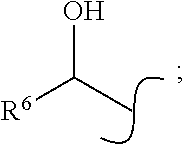

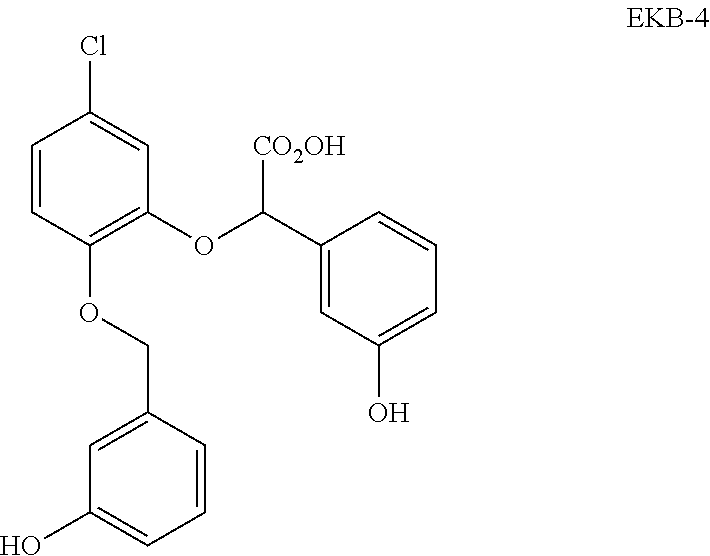












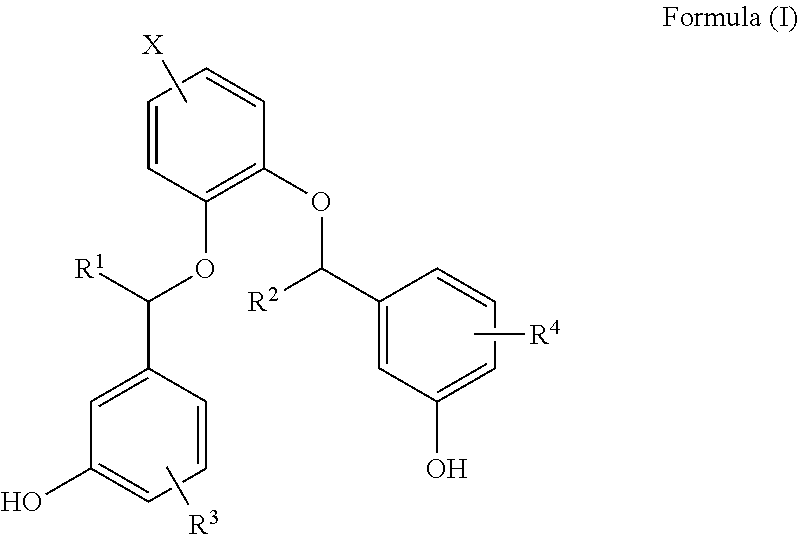



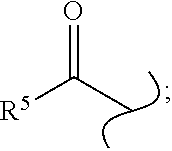




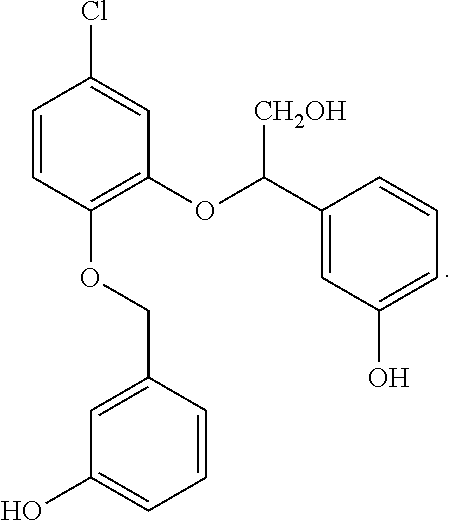

XML
uspto.report is an independent third-party trademark research tool that is not affiliated, endorsed, or sponsored by the United States Patent and Trademark Office (USPTO) or any other governmental organization. The information provided by uspto.report is based on publicly available data at the time of writing and is intended for informational purposes only.
While we strive to provide accurate and up-to-date information, we do not guarantee the accuracy, completeness, reliability, or suitability of the information displayed on this site. The use of this site is at your own risk. Any reliance you place on such information is therefore strictly at your own risk.
All official trademark data, including owner information, should be verified by visiting the official USPTO website at www.uspto.gov. This site is not intended to replace professional legal advice and should not be used as a substitute for consulting with a legal professional who is knowledgeable about trademark law.